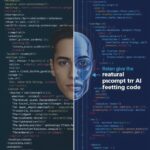Title: Unlocking Advanced Video Search with Multi-Vector Semantics Using Twelve Labs and Amazon OpenSearch Serverless
Introduction
Organizations today are awash in video content—from training sessions and customer support recordings to marketing campaigns and surveillance footage. As video libraries swell into the tens or hundreds of thousands of hours, finding a specific moment or pattern becomes a needle-in-a-haystack problem. Conventional search tools rely on metadata or simple keyword matching and miss the vast richness hidden in visuals, dialogue, ambient sound, and context. This gap has driven the rise of multi-vector semantic search, which captures all these dimensions simultaneously. In this article, we’ll explore how pairing Twelve Labs’ cutting-edge multimodal AI with Amazon OpenSearch Serverless creates a scalable, hybrid solution to pinpoint information anywhere in your video archives.
Why Traditional Search Falls Short
– Metadata Dependency: Manual tagging and summarization are labor-intensive and error-prone.
– Text-Only Focus: Relying on transcripts alone ignores tone, facial expressions, scene changes, and nonverbal cues.
– Inflexible Queries: Keyword matches fail to capture intent or variations in phrasing.
Enter Multi-Vector Semantic Search
Multi-vector search embeds different aspects of a video—frames, speech transcripts, audio patterns, and scene context—into separate high-dimensional vectors. When you run a query, each vector is compared against its corresponding field, and the results are fused to return the most semantically relevant clips. This approach unlocks queries like “show me where customers smile while talking about pricing” or “find clips with a technical explanation followed by an action shot.”
Core Components
1. Twelve Labs AI Models
• Multimodal Embeddings: Deep networks that process images, audio, and text in parallel.
• Scene Segmentation: Automatically breaks videos into meaningful segments (e.g., “presentation slide,” “customer reaction,” “product demo”).
2. Amazon OpenSearch Serverless
• Vector Indexing at Scale: Store and search millions of vectors without infrastructure management.
• Nested Fields: Attach multiple vectors to a single document, preserving modality and segment boundaries.
• Hybrid Search: Seamlessly combine vector similarity with traditional term matching for precision.
A Personal Anecdote
Last year, I was helping my team sift through hundreds of hours of recorded product demos to find every mention of our newly launched feature. We manually scanned transcripts, but we kept missing moments when presenters highlighted it visually rather than verbally. After integrating a multimodal pipeline, we not only located every spoken mention but also captured every time the feature appeared on screen. That “aha” moment drove home how much richer our search became when we treated video as more than just text.
How It Works—Overview
1. Data Ingestion
• Upload raw videos to an S3 bucket or stream them into your pipeline.
2. Preprocessing
• Frame Extraction: Sample key frames at regular intervals or based on shot detection.
• Speech-to-Text: Generate transcripts with timestamps.
• Audio Feature Extraction: Isolate tone, volume, and background noise patterns.
3. Embedding Generation (Twelve Labs)
• Visual Embeddings: Capture scene composition, objects, and human expressions.
• Text Embeddings: Convert transcript snippets into semantic vectors.
• Audio Embeddings: Model prosody, music, and environmental sounds.
4. Indexing (Amazon OpenSearch Serverless)
• Create an index with nested vector fields (e.g., image_vector, text_vector, audio_vector).
• Push each segment’s vectors into its corresponding nested field.
5. Querying
• Formulate a multi-vector query combining text prompts (“exploring pricing”), image queries (upload an example frame), and audio cues (“customer laughter”).
• OpenSearch computes similarity scores for each modality and returns top matches ranked by combined relevance.
Step-by-Step Implementation Guide
• Step 1: Set up an Amazon OpenSearch Serverless collection with nested vector fields.
• Step 2: Configure your Twelve Labs account and API keys.
• Step 3: Build a Lambda (or containerized) pipeline to extract frames, transcripts, and audio features.
• Step 4: Call Twelve Labs APIs to obtain embeddings for each segment.
• Step 5: Index these embeddings into OpenSearch using the bulk API.
• Step 6: Develop your search interface—accept text, image, or audio queries and display matched video timestamps.
• Step 7: Tune weighting factors for each modality based on user feedback.
Benefits of Hybrid Search
Combining vector similarity with term-based filters yields even greater precision. For instance, you might restrict results to a specific date range or product line while still leveraging semantic matching to find relevant content. This hybrid model ensures you can answer business questions such as “Which sales rep demoed feature X in the last quarter and had the highest customer engagement?”
Three FAQs
1. Q: How many vectors should I store per video?
A: It depends on segment granularity. A typical approach is 1–3 image vectors, 1 text vector, and 1–2 audio vectors per 10 seconds of video. You can adjust sampling rates to balance index size and recall needs.
2. Q: What kind of query latency can I expect?
A: With OpenSearch Serverless, you can achieve sub-second response times for vector searches on hundreds of millions of dimensions. Hybrid queries may add small overhead but remain interactive.
3. Q: How do I keep my index updated with new or edited content?
A: Implement an event-driven workflow—trigger embedding and indexing jobs whenever videos are added, modified, or removed in your storage layer. OpenSearch supports upserts for seamless updates.
Call to Action
Ready to transform how your organization discovers insights within video? Sign up for a free trial of Twelve Labs’ multimodal AI and launch an Amazon OpenSearch Serverless collection today. Visit our documentation for detailed tutorials, or contact our team for a personalized workshop. Dive into the next generation of video search and unlock hidden value in every frame, every word, and every sound.
